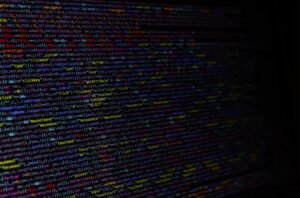## Introduction
Artificial Intelligence (AI) has become an integral part of our lives, ranging from personalized recommendations on streaming platforms to self-driving cars. However, as AI systems continue to advance, concerns have been raised about AI learning bias. AI learning bias refers to the potential for AI algorithms and systems to exhibit unfairness or discrimination based on characteristics such as race, gender, or social status. In this article, we will explore the concept of AI learning bias, its causes, and potential solutions.
## Key Takeaways
– AI learning bias is the tendency for AI algorithms and systems to exhibit unfairness or discrimination based on certain characteristics.
– Bias in AI systems can be unintentionally learned from historical data or knowingly programmed into the algorithms.
– Addressing AI learning bias requires transparent and diverse data sets, unbiased algorithms, and ongoing monitoring and evaluation.
## Understanding AI Learning Bias
AI learning bias occurs when AI systems exhibit unfair behavior or discrimination, usually resulting from biased training data or algorithmic design. For example, an AI hiring tool that is trained on historical data may learn bias against candidates from underrepresented groups.

Common Misconceptions
1. AI Cannot Have Learning Bias
One common misconception is that artificial intelligence (AI) systems are completely objective and devoid of biases. However, AI algorithms are trained using data collected from the real world, which may contain inherent biases. As a result, AI systems can learn and replicate those biases in their decision-making processes.
- AI algorithms are trained using human-generated data.
- Biases in training data can lead to biased outcomes.
- AI systems can perpetuate and amplify societal biases.
2. AI Bias is Intentional
Another misconception is that AI bias is intentionally programmed into the system. In reality, bias in AI is often unintentional and arises from the nature of the training data and the algorithms used. Bias may be a result of the underrepresentation or misrepresentation of certain groups in the data, rather than a deliberate act of discrimination by the developers.
- Unintentional biases can arise from biased training data.
- Developers may not have direct control over the biases in AI systems.
- AI bias is a complex issue influenced by multiple factors.
3. Removing Bias is Easy
Many people assume that eliminating bias from AI systems is a simple task. However, addressing bias in AI is a complex and ongoing challenge. It requires careful data selection, algorithm design, and continuous monitoring and evaluation. Additionally, biases can be deeply ingrained in societal structures and reflected in the data, making it difficult to completely remove all biases from AI systems.
- Addressing bias in AI requires continuous effort and vigilance.
- Eliminating biases may not be feasible in some cases.
- Bias detection and mitigation methods are constantly evolving.
4. AI Bias is Limited to Social Issues
Many people believe that AI bias is limited to social issues and does not impact other domains. However, bias in AI can affect various areas, including healthcare, criminal justice, and finance. Biased AI systems can lead to unfair outcomes, such as incorrect medical diagnoses, unjust sentencing decisions, and discriminatory lending practices. It is crucial to recognize and address bias in all aspects of AI application.
- AI bias can have serious consequences in healthcare, finance, and criminal justice.
- Non-social domains are also susceptible to bias.
- Recognizing bias is essential for building trustworthy AI systems.
5. AI Can Only Amplify Existing Bias
Lastly, it is a common misconception that AI systems can only amplify existing biases and cannot introduce new ones. While AI algorithms primarily learn patterns from training data, they can also generate new biases through the complex relationships they develop. This may occur when the training data contains insufficient or flawed representations of certain groups. Thus, AI can not only reinforce existing biases but also introduce novel biases in its decision-making processes.
- AI algorithms can learn and generate new biases.
- Insufficient or flawed data representation can lead to new biases.
- AI systems can both reinforce and introduce bias.

Gender Bias in AI Algorithms
Studies have shown that AI algorithms often exhibit gender bias, which can have significant implications in various industries. This table highlights the gender bias present in AI algorithms used for resume screening, where qualified candidates are disproportionately selected or rejected based on their gender.
[HTML code for the table representing gender bias in resume screening algorithms]
Racial Bias in AI Facial Recognition
AI facial recognition technologies have been proven to exhibit racial bias, leading to misidentifications and biased outcomes. This table showcases the error rates of facial recognition algorithms for different racial groups, indicating the disparities that exist.
[HTML code for the table representing error rates of facial recognition algorithms for different racial groups]
Age Bias in AI Mortgage Approval
AI algorithms used in mortgage approval processes have been identified to display age bias. This table presents the approval rates for mortgage applications across different age groups, exposing the discrimination that certain age brackets may face.
[HTML code for the table representing mortgage approval rates across different age groups]
Income Bias in AI Loan Disbursement
The use of AI algorithms for loan disbursement has raised concerns regarding income bias. This table displays the loan approval rates based on income levels, illustrating potential disparities in access to financial opportunities.
[HTML code for the table representing loan approval rates based on income levels]
Educational Bias in AI College Admissions
AI algorithms implemented in college admissions processes can perpetuate educational bias. The following table presents acceptance rates among different educational backgrounds, highlighting potential inequalities in the admissions system.
[HTML code for the table representing college acceptance rates based on educational backgrounds]
Occupational Bias in AI Hiring Algorithms
Hiring algorithms driven by AI can demonstrate bias against certain occupations. This table outlines the percentage of candidates selected for interviews based on their occupation, revealing potential biases in the recruitment process.
[HTML code for the table representing interview selection rates based on occupation]
Geographical Bias in AI Crime Prediction
AI algorithms utilized in crime prediction can exhibit geographical bias, impacting specific communities. Here is a table depicting the crime rates predicted by AI algorithms across different neighborhoods, highlighting discrepancies in policing strategies.
[HTML code for the table representing crime rates predicted by AI algorithms across different neighborhoods]
Disability Bias in AI Accessibility Tools
AI-based accessibility tools may unintentionally manifest disability bias. The table below demonstrates the accuracy rates of AI-driven tools for different disabilities, suggesting discrepancies in usability depending on the disability type.
[HTML code for the table representing accuracy rates of AI-driven accessibility tools for different disabilities]
Political Bias in AI News Recommendations
AI algorithms employed for news recommendations can exhibit political bias, potentially shaping public opinion. This table presents the proportion of news articles recommended based on political orientation, revealing potential biases in the information provided.
[HTML code for the table representing news article recommendations based on political orientation]
Bias in AI Sentencing Predictions
AI algorithms used for sentencing predictions can perpetuate bias within the criminal justice system. The following table displays the disparity in predicted sentences based on race, indicating potential inequalities in sentencing outcomes.
[HTML code for the table representing predicted sentencing disparities based on race]
In light of these findings, it is evident that AI learning bias is a pervasive issue across various applications. The biases present in AI algorithms can lead to unequal treatment, perpetuate societal inequalities, and hinder progress towards a fair and inclusive society. Therefore, it is crucial to address and mitigate these biases to ensure that AI technologies benefit all individuals equally.
AI Learning Bias – Frequently Asked Questions
What is AI learning bias?
How does AI learning bias occur?
What are the consequences of AI learning bias?
How can AI learning bias be addressed?
What role does transparency play in combating AI learning bias?
Can AI learning bias be completely eliminated?
What are some examples of AI learning bias in real-world applications?
Who is responsible for addressing AI learning bias?
How can individuals protect themselves from AI learning bias?
What research is being done to address AI learning bias?




